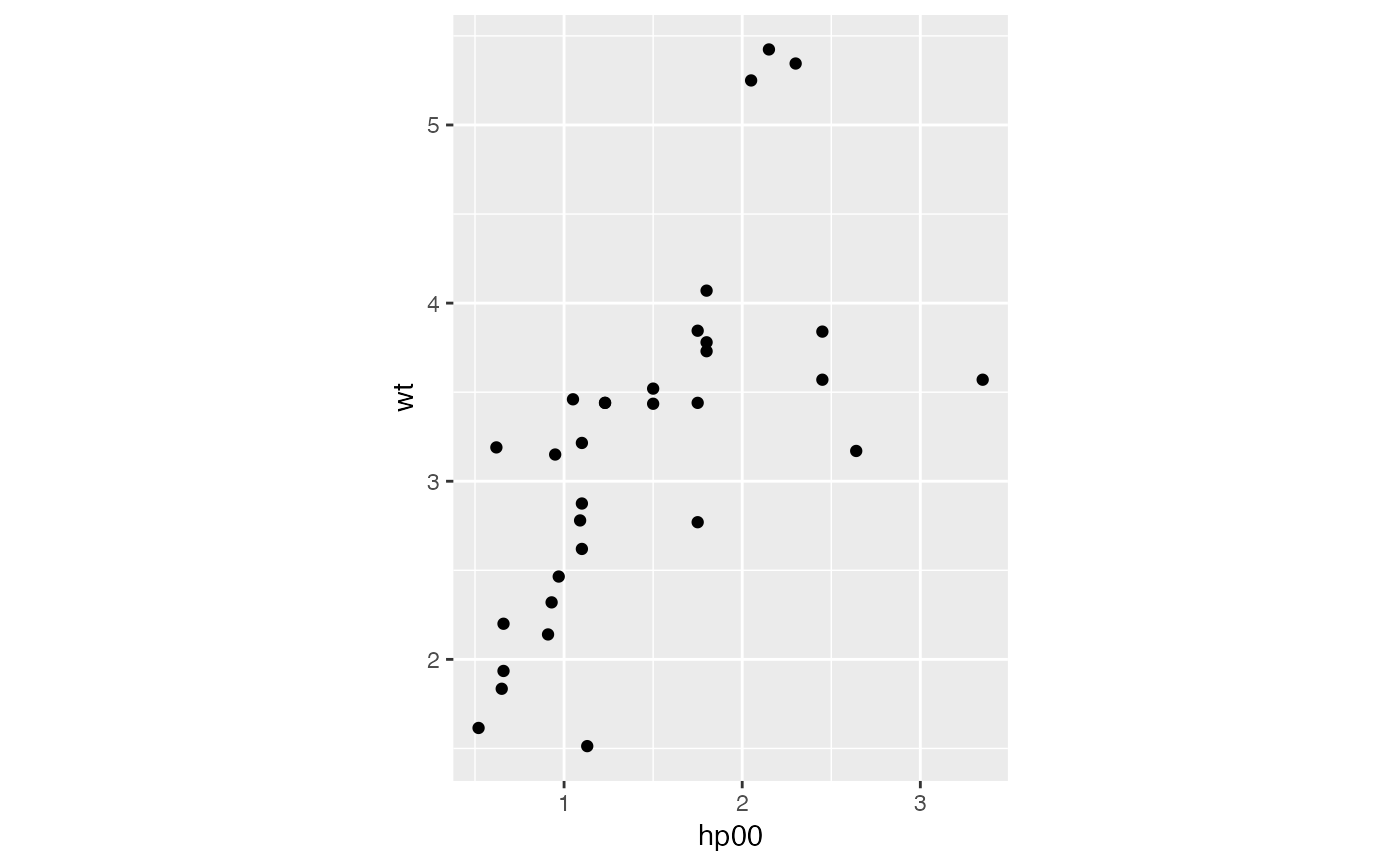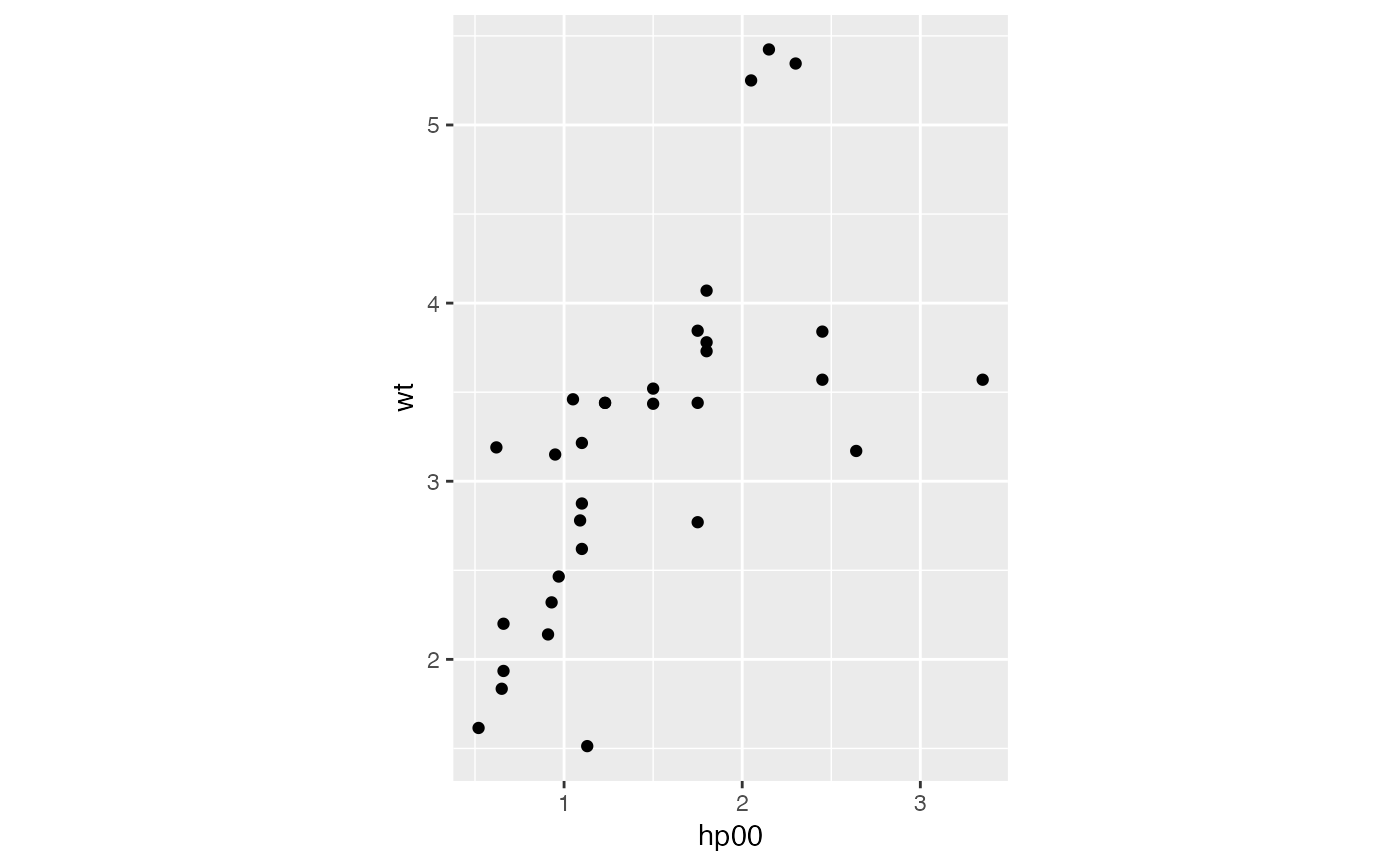Compute statistics with respect to a reference data set with shared positional variables.
Usage
stat_referent(
mapping = NULL,
data = NULL,
geom = "blank",
position = "identity",
referent = NULL,
show.legend = NA,
inherit.aes = TRUE,
...
)
# S3 method for class 'LayerRef'
ggplot_add(object, plot, object_name)Arguments
- mapping
Set of aesthetic mappings created by
aes(). If specified andinherit.aes = TRUE(the default), it is combined with the default mapping at the top level of the plot. You must supplymappingif there is no plot mapping.- data
The data to be displayed in this layer. There are three options:
If
NULL, the default, the data is inherited from the plot data as specified in the call toggplot().A
data.frame, or other object, will override the plot data. All objects will be fortified to produce a data frame. Seefortify()for which variables will be created.A
functionwill be called with a single argument, the plot data. The return value must be adata.frame, and will be used as the layer data. Afunctioncan be created from aformula(e.g.~ head(.x, 10)).- geom
The geometric object to use to display the data for this layer. When using a
stat_*()function to construct a layer, thegeomargument can be used to override the default coupling between stats and geoms. Thegeomargument accepts the following:A
Geomggproto subclass, for exampleGeomPoint.A string naming the geom. To give the geom as a string, strip the function name of the
geom_prefix. For example, to usegeom_point(), give the geom as"point".For more information and other ways to specify the geom, see the layer geom documentation.
- position
A position adjustment to use on the data for this layer. This can be used in various ways, including to prevent overplotting and improving the display. The
positionargument accepts the following:The result of calling a position function, such as
position_jitter(). This method allows for passing extra arguments to the position.A string naming the position adjustment. To give the position as a string, strip the function name of the
position_prefix. For example, to useposition_jitter(), give the position as"jitter".For more information and other ways to specify the position, see the layer position documentation.
- referent
The reference data set; see Details.
- show.legend
logical. Should this layer be included in the legends?
NA, the default, includes if any aesthetics are mapped.FALSEnever includes, andTRUEalways includes. It can also be a named logical vector to finely select the aesthetics to display.- inherit.aes
If
FALSE, overrides the default aesthetics, rather than combining with them. This is most useful for helper functions that define both data and aesthetics and shouldn't inherit behaviour from the default plot specification, e.g.borders().- ...
Additional arguments passed to
ggplot2::layer().- object
An object to add to the plot
- plot
The ggplot object to add
objectto- object_name
The name of the object to add
Value
A ggproto layer.
Details
Often in geometric data analysis a statistical transformation applied to data
\(X\) will also depend on data \(Y\), for example when drawing the
projections of vectors \(X\) onto vectors \(Y\). The stat layer
stat_referent() accepts \(Y\) as an argument to the referent parameter
and pre-processes them using the existing positional aesthetic mappings to
x and y.
The ggproto can be used as a parent to more elaborate statistical
transformations, or the stat can be paired with geoms that expect the
referent parameter and use it to position their transformations of \(X\).
It pairs by default to [ggplot2::geom_blank()] so as to prevent possibly
confusing output.
See also
Other biplot layers:
biplot-geoms,
biplot-stats,
stat_rows()
Examples
# simplify the Motor Trends data to two predictors legible at aspect ratio 1
mtcars |>
transform(hp00 = hp/100) |>
subset(select = c(mpg, hp00, wt)) ->
subcars
# compute the gradient of `mpg` against these two predictors
lm(mpg ~ hp00 + wt, subcars) |>
coefficients() |>
as.list() |> as.data.frame() ->
grad
# use the gradient as a reference (to no effect in this basic ggproto)
ggplot(subcars, aes(x = hp00, y = wt)) +
coord_equal() +
geom_point() +
stat_referent(referent = grad)
 ggplot(subcars, aes(x = hp00, y = wt)) +
coord_equal() +
stat_referent(geom = "point", referent = grad)
ggplot(subcars, aes(x = hp00, y = wt)) +
coord_equal() +
stat_referent(geom = "point", referent = grad)
